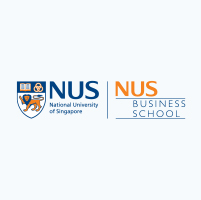Almost every developed country has the same problem – that people don’t seem to have enough assets to fund their retirement.
The causes of this issue can be narrowed down to two basic areas:
- Saving: we don’t save enough, and take on debt and spend, as it’s easy and convenient.
- Investing: we don’t invest our retirement assets appropriately, either because of carelessness, or lack of knowledge or perhaps because the investment industry is not aligned with our best interest.
Every country, including Singapore, has tried to solve this by investor education and by creative freedom in investment products. But perhaps this is not the problem, and we really need to break the mould if we truly want to solve this problem. Here is what I propose.
Savings
Despite the knowledge of the excess spending dilemma, our whole environment and the financial industry is geared to spending. We provide credit cards, debit cards and unlimited ways for all of us to be able to spend easily at every opportunity – over the phone, internet and physically at every step. Think about it – within a one mile radius of where you stand, there are probably a thousand places where you can spend money. How many are there where you can save money – five or 10? Even governments and economies want people to spend more money to show economic growth.
What’s even more perverse is that when someone is spending, perhaps more than he should, no one is there to KYC (“Know Your Client”), to know whether he can afford it. Spending is welcomed with a smile. But when we want to save and invest – oh no, how can you possibly do that? We need to do a KYC and know where you got the money from, you need to fill a 20-page risk profiling questionnaire, and then of course there are pages and pages of disclaimers which no sane person can understand.
Let’s face it – our society makes saving very difficult compared to spending.
So what if we turned this on its head? Almost every person in most countries heads to a McDonalds, Starbucks or similar outlet at least a couple of times a week. And each of those outlets is linked electronically to be able to deduct money from us from our banks or via cards.
What if we use the same pipes to save money, not just spend it? How would it be if apart from asking “Do you want fries with that?” or “Would that be a Tall or Grande?”, the server also nudges you every time with, “ Would you like to put $2 in your retirement account today?” I bet that if you just spent $10 on your breakfast, you would say yes a few times a week to putting $2 away in your retirement account. And if every shop asks you to save just as they ask you to spend, then asked a 100 times, we would save a lot more automatically.
Only then can spending and saving be of equal convenience and importance.
Investing
The good and the great in the investment industry have created a plethora of jargon – alpha (and a portable version), beta (and a smart version), risk parity, all-weather, manager selection, options, structured products, equities, hard currency bonds…. it’s a bottomless pit. And then we blame the common man on the street for not having enough knowledge and we need to financially educate him.
That’s total nonsense.
If I get on a bus, all I want to know is that it will get me from point A to B. I don’t need to know how the engine works or who the bus driver is or even what route it will take, as long as it gets me there. Investing is the same – we all understand the benefit of having $10 versus the pain of losing $5.
It is not the investor that needs financial education – it’s the investment industry that needs to keep their cookbook of financial jargon to itself.
And how would you do that? All investment products should only have a description of target gain and maximum loss. Just like I don’t care what route my bus driver takes, as long as he gets me to my destination safely and in a timely fashion, I don’t care if an investment manager does allocation or stock selection, invests in Asia or Europe – as long as he delivers the promised return on the label with the appropriate caveats transparently and honestly placed (“truth in labeling”).
Product benchmarks need to be abolished. The only benchmark is absolute return. So if we walk up to an Asian Equity manager – he should only have an objective of delivering a 5% target total return, that’s it. No more no less, apart from the caveats. I don’t care about the market or the index or what he does. Just give me 5%, as that’s my destination and that what I paid for.
Of course, the investor also needs to know in a simplified form, the risk of delays, accidents and breakdowns along the way.
There is no portable alpha, smart beta, outperformance, or any of that jargon which is today used as an excuse to justify fees and underperformance. The whole concept of market benchmarks is ridiculous – most of us in the industry don’t get paid salaries in terms of market benchmarks, we don’t articulate our liability in market benchmarks, and we certainly don’t use market benchmarks to define how much return we need or what risk we are prepared to take.
Indeed, and at the risk of sounding provocative, let every investment product just have those two parameters – target return and maximum drawdown – on the label, and get penalized if they don’t deliver that.




